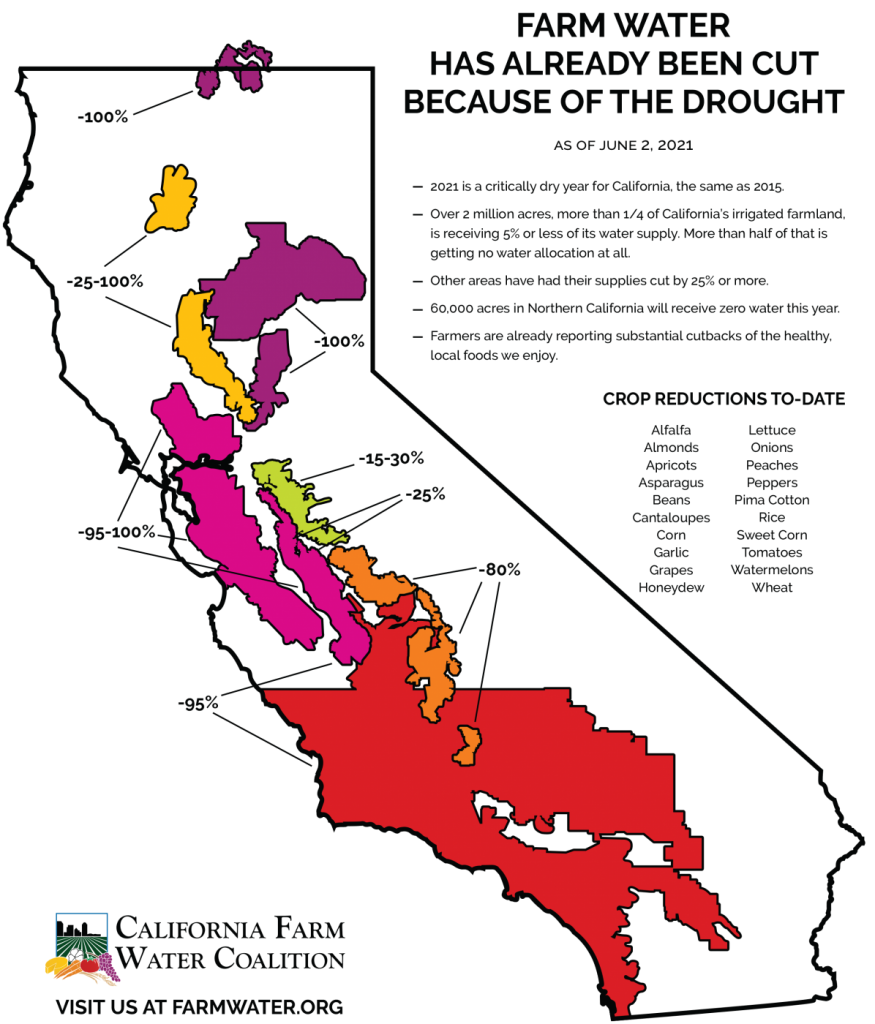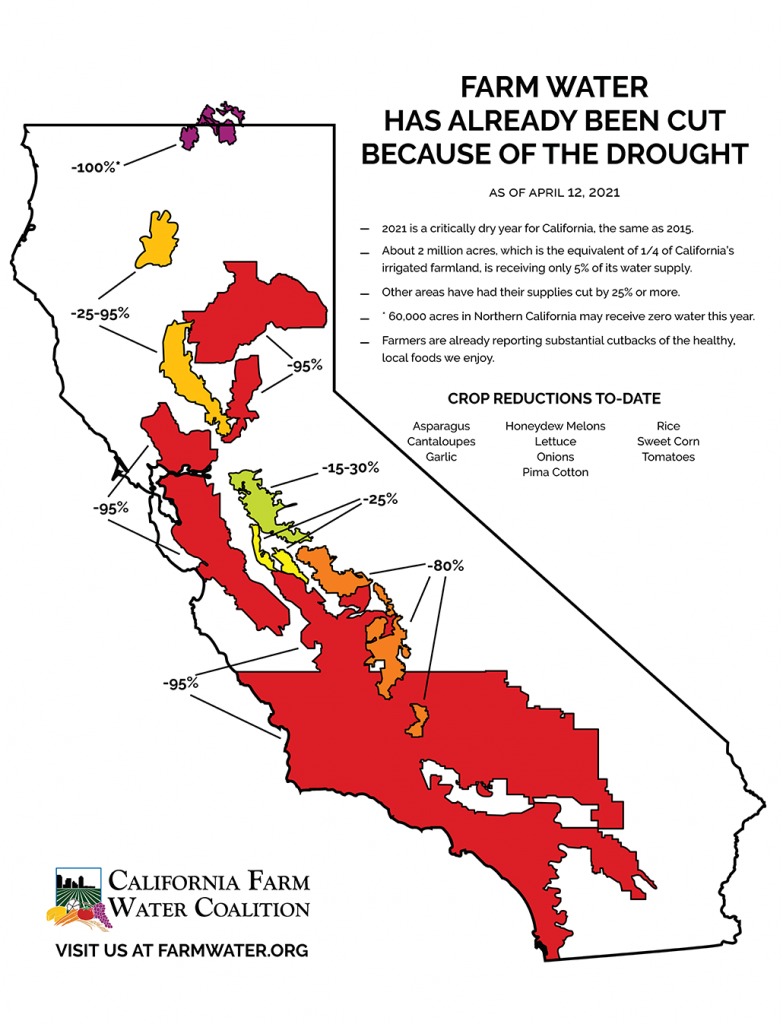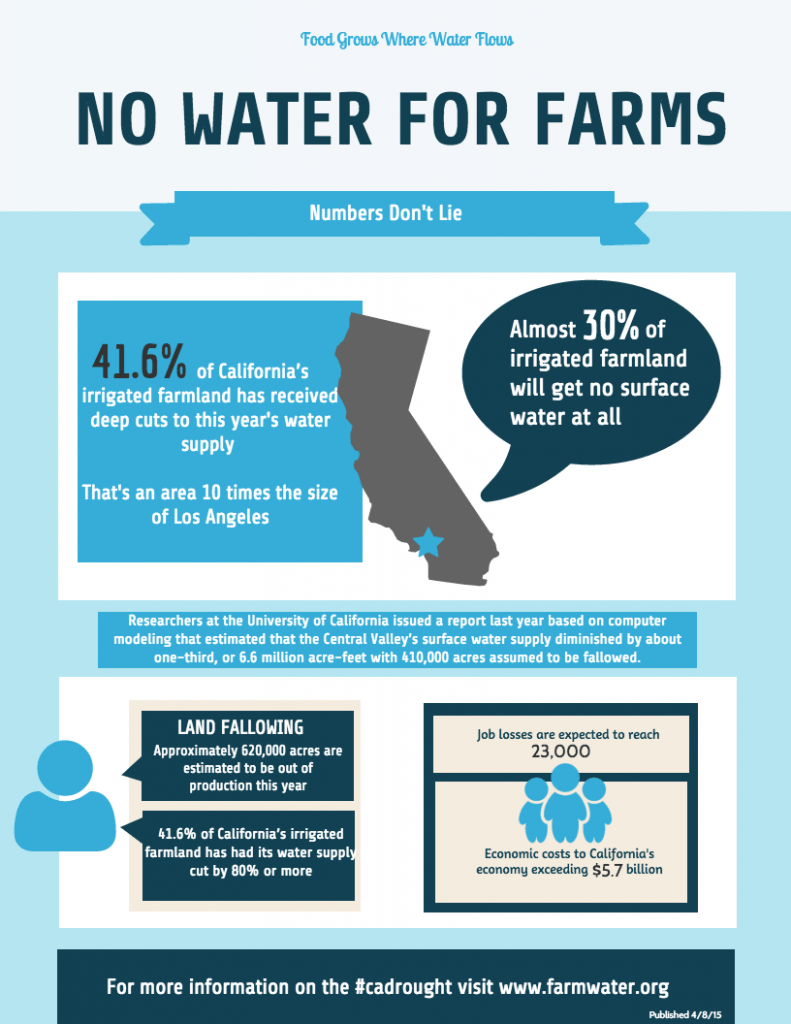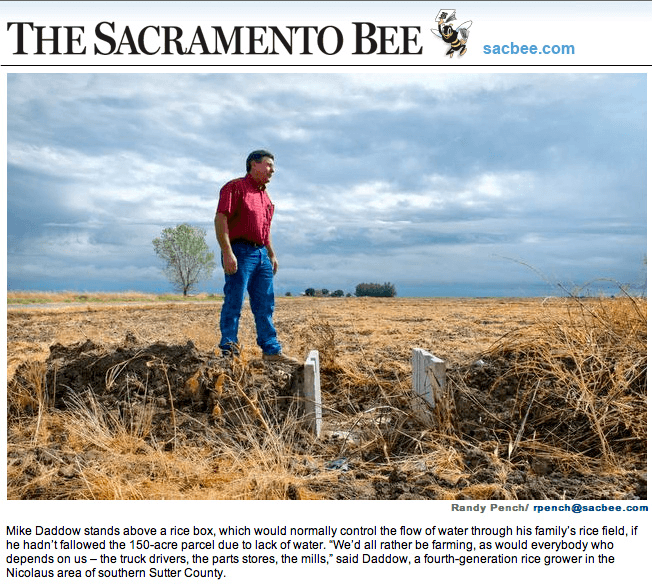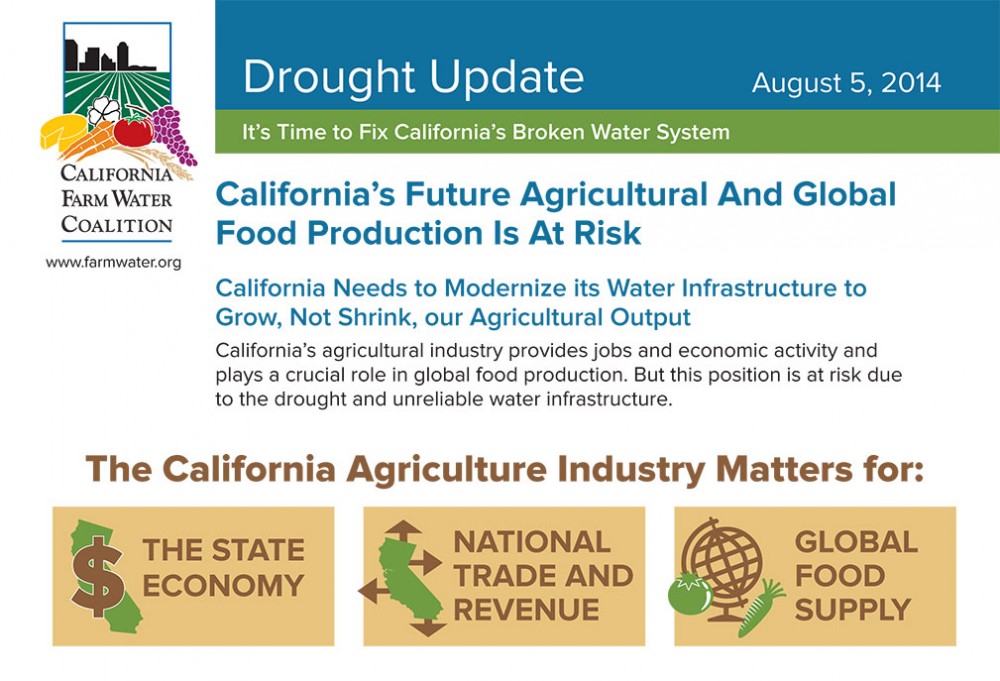Statement by the California Farm Water Coalition on Upcoming State Water Board Action That Will Cut Water Supplies to Thousands of Farms “It is unbelievable that just two short years after our reservoirs were largely full, California is so water short that the State Water Resources Control Board is seriously considering completely eliminating water supplies […]
Updated Map – 2021 Farm Water Supplies Cut Again
Updated June, 2021: California farms are bearing the brunt of this year’s short water supply and have been forced to reduce the acreage of popular California crops, such as asparagus, melons, lettuce, rice, tomatoes, sweet corn, and others. Water supply reductions mean fewer fresh fruits and vegetables for consumers, massive farm-related job losses, and billions […]
Map Shows 2021 Farm Water Supply Cuts
Click here to see the latest map. Updated: June 2021 California farms are bearing the brunt of this year’s short water supply and have been forced to reduce the acreage of popular California crops, such as asparagus, melons, lettuce, rice, tomatoes, sweet corn, and others. Water supply reductions mean fewer fresh fruits and vegetables for […]
2017 Snow Survey Results Off the Charts- Must Improve Water Supplies
Snow Survey Results Off the Charts- Must Improve Water Supplies When state snow surveyors visited the Sierra Nevada today, they found a snowpack well above average for the date, and the biggest in more than 20 years. California agricultural organizations say they hope that translates into improved water supplies for the state’s farmers and ranchers. California […]
Treated recycled water added to farmers’ arsenal of water supplies
(The following is a statement by Mike Wade, Executive Director of the California Farm Water Coalition, in response to the North Valley Regional Recycled Water Program that is planned to deliver treated recycled water to farmers.) SACRAMENTO—“The California Farm Water Coalition applauds the cities of Turlock and Modesto as they celebrate the certification of the […]
California drought affects farms and consumers
Farmers and consumers share a unique relationship. The California drought is helping people understand how important it is for farms to have the water they need to grow the food we all find at the grocery store. Serious water supply cuts affect our food supply as well as the people in rural communities who depend […]
Over 41 percent of California’s irrigated farmland loses nearly entire surface water supply
Over 41 percent of California’s irrigated farmland will lose 80 percent or more of its normal surface water allocation this year, according to a new survey by the California Farm Water Coalition. The survey of agricultural water suppliers conducted the first week of April shows that 3.1 million acres, or 41.6 percent of California’s irrigated […]
Proposition One: What You Need to Know
The Water Quality, Supply and Infrastructure Improvement Act of 2014 (Proposition One on the Ballot November 4) authorizes $7.12 billion in general obligation bonds for the following
Continue readingCalifornia Harvest Much Smaller Than Normal Across Crops
It’s harvest time in much of California, and the signs of drought are almost as abundant
as the fruits and nuts and vegetables
August 5, 2014 Drought Fact Sheet
California Needs to Modernize its Water Infrastructure to Grow, Not Shrink, our Agricultural Output. California’s agricultural industry provides jobs and economic activity and plays a crucial role in global food production. But this position is at risk due to the drought and unreliable water infrastructure.
Continue reading